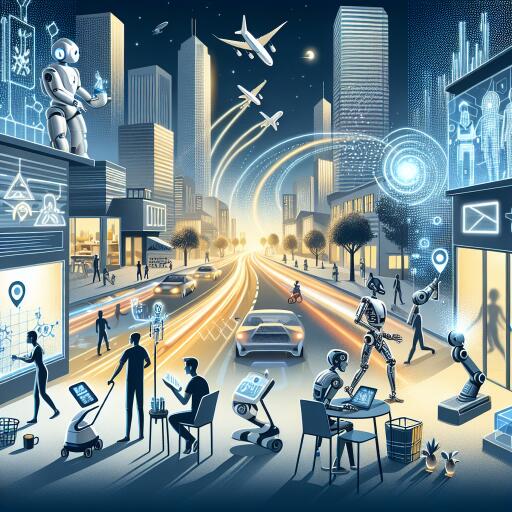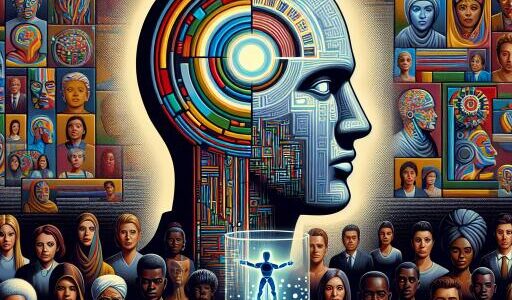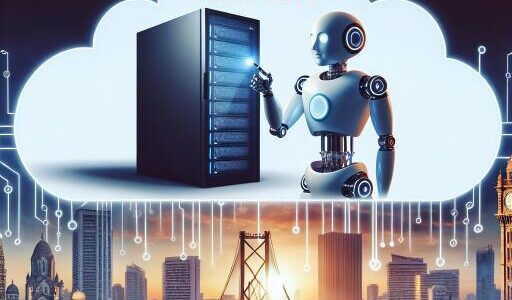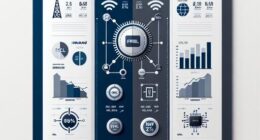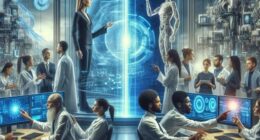NVIDIA’s Bold 2025 Predictions: AI and Robots Set to Transform Your Life
Imagine a world where robots seamlessly prepare your meals, AI swiftly unravels scientific mysteries, and interacting with technology feels as natural as chatting with a friend. While this may sound like a scene from a futuristic novel, Dr. Jim Fan, a distinguished AI and robotics researcher at NVIDIA, suggests that this vision is closer to reality than we might think. Looking back at the rapid advancements of 2024, Dr. Fan offers a captivating and thought-provoking glimpse into the possibilities 2025 holds. From humanoid robots entering our homes to AI revolutionizing science and education, the opportunities seem boundless—yet so do the challenges. The burning question remains: how do we ensure these “godlike technologies” truly serve humanity’s best interests?
As we stand on the cusp of this new epoch, a mixture of awe and apprehension is palpable. Rapid innovation frequently escorts growing pains. Will these technological advancements smooth the edges of everyday life, or will they contribute to widening societal chasms? Dr. Fan’s insights illuminate not just the breakthroughs on the horizon but also stress the importance of aligning these technologies with human values and necessities. Whether you’re an enthusiastic tech aficionado or a cautious observer, this peek into the near future extends hope and issues a call to action.
Humanoid robots, transitioning from lab experiments to practical daily tools, are on the verge of becoming commonplace in our households. Pioneering projects like Tesla Optimus, Boston Dynamics Atlas, and Clone Robotics’ biomimetic creations lead this revolution. Not only are these robots growing more skilled, but they are also plummeting in price, heralding a future where middle-class families might welcome robots capable of handling chores like cleaning, cooking, and even offering companionship by 2025.
The drop in costs is mainly thanks to skyrocketing advancements in robotic hardware and the Sim2Real training strategy. Sim2Real enables robots to master complex tasks in simulated environments before executing them in the real world, resulting in accelerated development cycles, reduced expenses, and practical robots for everyday tasks. With technologies maturing, humanoid robots are set to become indispensable parts of modern life.
AI’s transformation of robotics is enabling machines to operate with unprecedented autonomy, adaptability, and efficiency. NVIDIA’s Project Groot is a testament to this trend, focusing on general-purpose robot intelligence. Similarly, affordable robotics kits like the Aloha setup are simplifying the integration of robots into daily operations for individuals and small businesses alike.
Embodied AI examples, like Tesla’s self-driving cars, illustrate AI’s ability to navigate intricate environments, while robots handling multi-step tasks are tackling domestic chores and industrial processes. These technological leaps are giving rise to smarter, more versatile machines, capable of adapting to diverse settings and tackling a wide array of tasks. As AI-driven robotics become increasingly accessible, they will redefine human interaction with technology in personal and professional realms.
AI is reshaping discovery in various scientific domains, altering the pace and extent of research fundamentally. Platforms like AlphaFold have revolutionized protein-folding predictions, unveiling new frontiers in biology and medicine. In mathematics, AI systems outperform human participants in elite events like the International Mathematics Olympiad (IMO), highlighting their prowess in solving complex problems with unparalleled precision.
Beyond these advancements, AI accelerates progress in physics, chemistry, and environmental science by automating intricate computations, analyzing extensive datasets, and uncovering hidden patterns. These capabilities empower researchers to surmount previously insurmountable hurdles, fostering innovation and accelerating progress in crucial study areas.
AI application evolution is grounded in hardware breakthroughs. High-performance, efficient computing solutions are crucial to meeting AI-driven systems’ growing demands. NVIDIA’s Blackwell architecture and Jetson Nano exemplify compact yet powerful hardware tailor-made to support diverse AI applications.
In parallel, quantum computing breakthroughs, like Google’s Willow quantum chip, promise solutions to problems at exponentially faster rates than traditional supercomputers. These innovations not only enhance AI systems’ capabilities but also democratize access for researchers, developers, and industries globally. As hardware advances, it will be pivotal in unlocking new AI and robotics possibilities.
Generative AI is revolutionizing virtual environment creation and interaction. Cutting-edge models, such as Sora, simulate 3D environments with intuitive physics, driving breakthroughs in gaming, simulations, and real-time world modeling. These tools equip developers to craft immersive, realistic virtual experiences with exceptional efficiency.
Simultaneously, video generation technologies undergo rapid evolution, producing more engaging lifelike content for entertainment, education, and training purposes. By streamlining creative workflows and enhancing digital content quality, generative AI reshapes industries, expanding the boundaries of possibility in virtual spaces.
Large language models (LLMs) evolve to become more intelligent, versatile, and accessible. Systems like Gemini 1.5 and Llama 3 demonstrate advanced reasoning, coding, and in-context learning capabilities. These models not only continue to improve in performance but also see wider dissemination thanks to rising open-source AI initiatives.
The broad accessibility of LLMs empowers researchers, developers, and organizations to harness innovative tools for diverse applications. From automating customer service to enhancing educational platforms, these models drive innovation and unlock new possibilities across various sectors.
Advances in human-AI interfaces make AI system interactions more seamless and intuitive. Real-time speech models and advanced voice assistants like GPT-4.0’s voice mode enable natural communication between humans and machines. These interfaces enhance usability, allowing users to interact with AI systems in organic, efficient ways.
Applications vary from customer service chatbots to personal assistants managing schedules, answering inquiries, and providing tailored recommendations. By improving AI systems’ ease of use and accessibility, these interfaces bridge the human-technology gap, encouraging greater integration and adoption.
Open-source AI plays a crucial role, fostering global collaboration and innovation. Contributions from diverse communities, like China’s DeepSeek model, power progress and expand access to cutting-edge technologies. Open-source frameworks and tools enable researchers and developers to share insights, build upon each other’s work, and accelerate innovation.
This collaborative approach ensures wide AI access, distributing benefits more equitably worldwide. Promoting openness and inclusivity, open-source AI helps cultivate a more connected and innovative global community.
As AI and robotics’ journey continues, addressing ethical and societal implications becomes paramount. Dr. Fan underscores the challenge of aligning these technologies with societal needs, given humanity’s “Paleolithic emotions, medieval institutions, and godlike technology.” Responsible development and AI application are essential to ensure these advancements spark positive change.
Key ethical concerns, including bias, privacy, accountability, and potential job displacement, must be addressed to build trust and foster AI and robotics’ widespread adoption. Prioritizing ethical considerations allows society to harness these technologies’ immense potential while minimizing risks, ensuring they contribute to the greater good.
Looking ahead to 2025, the ongoing evolution of AI and robotics promises profound industry changes, enhanced life quality, and solutions for global challenges. However, achieving these outcomes requires balancing technological progress with ethical responsibility. By fostering collaboration, promoting responsible innovation, and addressing societal concerns, stakeholders can shape a future where AI and robotics integrate into society, benefiting humanity. For more information, visit the official NVIDIA website.

